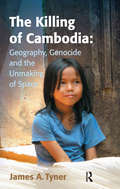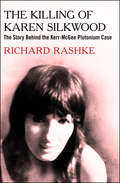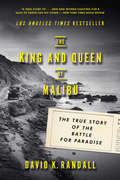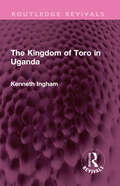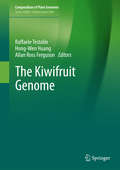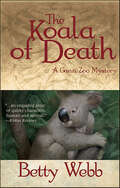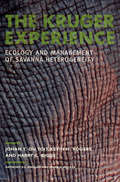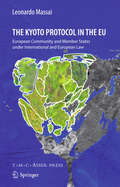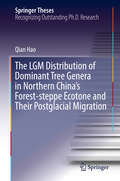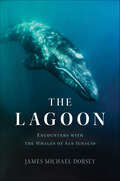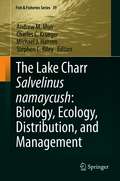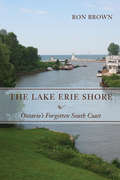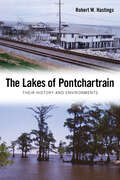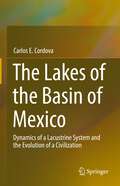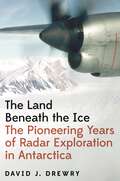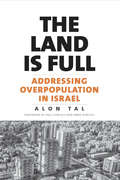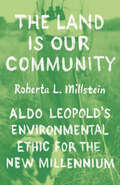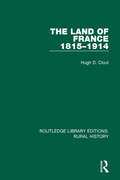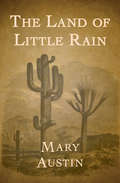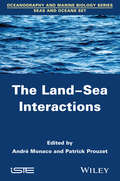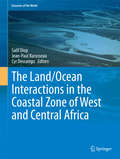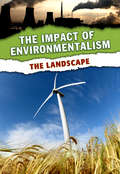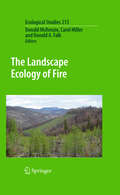- Table View
- List View
The Killing of Cambodia: Geography, Genocide and the Unmaking of Space
by James A. TynerBetween 1975 and 1978, the Khmer Rouge carried out genocide in Cambodia unparalleled in modern history. Approximately 2 million died - almost one quarter of the population. Taking an explicitly geographical approach, this book argues whether the Khmer Rouge's activities not only led to genocide, but also terracide - the erasure of space. In the Cambodia of 1975, the landscape would reveal vestiges of an indigenous pre-colonial Khmer society, a French colonialism and American intervention. The Khmer Rouge, however, were not content with retaining the past inscriptions of previous modes of production and spatial practices. Instead, they attempted to erase time and space to create their own utopian vision of a communal society. The Khmer Rouge's erasing and reshaping of space was thus part of a consistent sacrifice of Cambodia and its people - a brutal justification for the killing of a country and the birth of a new place, Democratic Kampuchea. While focusing on Cambodia, the book provides a clearer geographic understanding to genocide in general and insights into the importance of spatial factors in geopolitical conflict.
The Killing of Karen Silkwood: The Story Behind the Kerr-McGee Plutonium Case
by Richard RashkeOn November 13, 1974, Karen Silkwood was driving on a deserted Oklahoma highway when her car crashed into a cement wall and she was killed. On the seat next to her were doctored quality-control negatives showing that her employer, Kerr-McGee, was manufacturing defective fuel rods filled with plutonium. She had recently discovered that more than forty pounds of plutonium were missing from the Kerr-McGee plant. Forty years later, her death is still steeped in mystery. Did she fall asleep before the accident, or did someone force her off the road? And what happened to the missing plutonium? The Killing of Karen Silkwood meticulously lays out the facts and encourages the readers to decide. Updated with the author's chilling new introduction that discusses the similarities with Edward Snowden's recent revelations, Silkwood's story is as relevant today as it was forty years ago. For this updated edition, the author has added the latest information as to what happened to the various people involved in the Silkwood case and news of the lasting effects of this underreported piece of the history of the antinuclear movement.
The King and Queen of Malibu: The True Story of the Battle for Paradise
by David K. RandallNew York Times best-selling author David K. Randall spins a remarkable tale of the American West and the desire of one couple to preserve paradise. Frederick and May Rindge, the unlikely couple whose love story propelled Malibu's transformation from an untamed ranch in the middle of nowhere to a paradise seeded with movie stars, are at the heart of this story of American grit and determinism. He was a Harvard-trained confidant of presidents; she was a poor Midwestern farmer's daughter raised to be suspicious of the seasons. Yet the bond between them would shape history. The newly married couple reached Los Angeles in 1887 when it was still a frontier, and within a few years Frederick, the only heir to an immense Boston fortune, became one of the wealthiest men in the state. After his sudden death in 1905, May spent the next thirty years fighting off some of the most powerful men in the country--as well as fissures within her own family--to preserve Malibu as her private kingdom. Her struggle, one of the longest over land in California history, would culminate in a landmark Supreme Court decision and lead to the creation of the Pacific Coast Highway. The King and Queen of Malibu traces the path of one family as the country around them swept off the last vestiges of the Civil War and moved into what we would recognize as the modern age. The story of Malibu ranges from the halls of Harvard to the Old West in New Mexico to the beginnings of San Francisco's counter culture amid the Gilded Age, and culminates in the glamour of early Hollywood--all during the brief sliver of history in which the advent of railroads and the automobile traversed a beckoning American frontier and anything seemed possible.
The Kingdom of Toro in Uganda (Routledge Revivals)
by Kenneth InghamFirst published in 1975, The Kingdom of Toro in Uganda describes the foundation of the Toro kingdom in the nineteenth century by the rebel prince Kaboyo, and investigates how Kasagama, Kaboyo’s grandson, was able to recreate, with little local support, a kingdom far more extensive than Kaboyo had ever envisaged. His personal authority was established by his insistence that its root were traditional, thus satisfying the requirements of ‘indirect rules’ at a time when this ill-defined concept served both as the shibboleth and the escape clause for an overstretched British colonial administration. Although Kasagama’s son, Rukidi, was able to combine authority with personal popularity and to take advantage of colonial innovations without losing control of his kingdom, the ending of colonial rule brought an end to Toro as he knew it. In an independent Uganda the particularism stressed by Toro’s rulers could not survive. This book will be of interest to students of history, colonialism, African studies and ethnic studies.
The Kiwifruit Genome
by Raffaele Testolin Hong-Wen Huang Allan Ross FergusonThis book describes the basic botanical features of kiwifruit and its wild relatives, reports on the steps that led to its genome sequencing, and discusses the results obtained with the assembly and annotation. The core chapters provide essential insights into the main gene families that characterize this species as a crop, including the genes controlling sugar and starch metabolism, pigment biosynthesis and degradation, the ascorbic-acid pathway, fruit softening and postharvest metabolism, allergens, and resistance to pests and diseases. The book offers a valuable reference guide for taxonomists, geneticists and horticulturists. Further, since information gained from the genome sequence is extraordinarily useful in assessing the breeding value of individuals based on whole-genome scans, it will especially benefit plant breeders. Accordingly, chapters are included that focus on gene introgression from wild relatives and genome-based breeding.
The Koala of Death: A Gunn Zoo Mystery (Gunn Zoo Series #2)
by Betty WebbWhen zookeeper Theodora "Teddy" Bentley fishes the body of Koala Kate out of Gunn Landing Harbor, she discovers that her fellow zookeeper didn't drown; she was strangled. The clues to Kate's killer implicate other animal keepers at Gunn Zoo, including Outback Bill, marsupial keeper and Kate's Aussie ex-boyfriend; and Robin Chase, the big cat keeper who's got it in for Teddy. Also displaying suspicious behavior are several "liveaboarders" at the harbor; Speaks-To-Souls, a shady "animal psychic;" and even Caro, Teddy's much-married, ex-beauty queen mother.But murderers aren't all Teddy has to worry about. Her embezzling father is still on the run from the Feds, and the motor on her houseboat is failing. To pay for the repairs, Teddy agrees to appear on a weekly live television broadcast featuring misbehaving animals that range from a cuddly koala to a panicky wallaby - and all hell breaks loose in the TV studio. All the while, the killer is narrowing in on Teddy....
The Kruger Experience: Ecology And Management Of Savanna Heterogeneity
by Brian Walker Anthony R.E. Sinclair Kevin H. Rogers Johan T. du Toit Harry C. BiggsThe Kruger Experience is an invaluable new resource for scientists and managers involved with large, conserved ecosystems as well as for conservation practitioners and others with interests in adaptive management, the societal context of conservation, links between research and management in parks, and parks/academic partnerships.
The Kyoto Protocol in the EU
by Leonardo MassaiThe participation of the European Community and the Member States in the international climate change regimes is a complex issue. In the case of the Kyoto Protocol, this is rendered more complicated by the fact that, for the purposes of Article 4 of the Kyoto Protocol, the membership of the European Community and Member States is frozen at a particular point in time. The result of this is that, under international law, the European Community and a part of the Member States (EU15) have agreed to jointly fulfil some of those obligations, whereas under community law all Member States share a certain degree of responsibility to meet the obligations created by the Kyoto Protocol. This book analyses in great detail the Kyoto Protocol and the obligations established, such as monitoring and reporting obligations, eligibility criteria and reduction commitments.
The LGM Distribution of Dominant Tree Genera in Northern China's Forest-steppe Ecotone and Their Postglacial Migration (Springer Theses)
by Qian HaoThis book systematically discusses the vegetation dynamics in northern China since the LGM, with a focus on three dominant tree species (Pinus, Quercus and Betula). By integrating methods of palaeoecology, phylogeography and species distribution model, it reconstructs the glacial refugia in northern China, demonstrating that the species were located further north than previously assumed during the LGM. The postglacial dynamics of forest distribution included not only long-distance north-south migration but also local spread from LGM micro-refugia in northern China. On the regional scale, the book shows the altitudinal migration pattern of the three dominant tree genera and the role of topographical factors in the migration of the forest-steppe border. On the catchment scale, it analyzes Huangqihai Lake, located in the forest-steppe ecotone in northern China, to indentify the local forest dynamics response to the Holocene climatic change. It shows that local forests have various modes of response to the climate drying, including shrubland expansion, savannification and replacement of steppe. In brief, these studies at different space-time scales illustrate the effects of climate, topography and other factors on forest migration.
The Lagoon: Encounters with the Whales of San Ignacio
by James Michael DorseyA voyage to a magical marine haven, the San Ignacio Lagoon in Baja, Mexico, where the connection between man and beast is like no other on Earth. Once a killing ground for whalers hunting a leviathan they called the “devilfish,” the San Ignacio Lagoon in Baja, Mexico, is now an environmental and spiritual sanctuary—the only place in the world where animals in their natural aquatic environment routinely seek out human contact. A nursery for the gray whale since before recorded history, the lagoon and its stories, told here by resident naturalist James Michael Dorsey, illuminate the magic of human connection to animals, and what those bonds teach us about ourselves and our purpose on this shared planet. Weaving two decades of San Ignacio adventures in the company of his wife Irene with the fascinating history of the lagoon, Dorsey vividly captures the lively people of Baja, like the mystical godfather of whale-watching, Pachico Mayoral, as well as the whales he’s bonded with over the years, like Slackjaw, Patch, and Dervish—their individual personalities, their epic migration to and from the Pacific Northwest, and the science behind their behavior. Looming over his journeys are the many dangers to the area, from the Mitsubishi Corporation’s attempts to build salt works to plans for resort development on the Baja coast, to pollution and climate change, and even to the orcas who hunt the gray whales. The future of this refuge has never looked more threatened. A tale of wondrous bonds between the intelligent, spirited gray whales and the men, women, and children from around the world who come to this place to touch, kiss, and play with them—The Lagoon is a testament to the importance of preserving these animals and their natural habitats.
The Lake Charr Salvelinus namaycush: Biology, Ecology, Distribution, and Management (Fish & Fisheries Series #39)
by Andrew M. Muir Charles C. Krueger Michael J. Hansen Stephen C. RileyThe lake charr Salvelinus namaycush is a ubiquitous member of cold-water lake ecosystems in previously glaciated regions of northern continental U.S., Alaska, and Canada that often support important commercial, recreational, and subsistence fisheries. The lake charr differs from other charrs by its large size, longevity, iteroparity, top-predator specialization, reduced sexual dimorphism, prevalence of lacustrine spawning, and use of deepwater habitat. The species is remarkably variable in phenotype, physiology, and life history, some of which is reflected in its ecology and genetics, with as many as four morphs or ecotypes co-occurring in a single lake. The lake charr is often the top predator in these systems, but is highly adaptable trophically, and is frequently planktivorous in small lakes. The lake charr by their name highlights their common habitat, lakes both large and small, but often frequents rivers and occasionally moves into the Arctic Ocean. Movement and behaviour of lake charr are motivated by access to cool, well-oxygenated water, foraging opportunities, predator avoidance, and reproduction. Owing to their broad distribution and trophic level, the lake charr serves as a sentinel of anthropogenic change. This volume will provide an up-to-date summary of what is currently known about lake charr from distribution to genetics to physiology to ecology. The book provides a compilation and synthesis of available information on the lake charr, beginning with an updated distribution and a revised treatment of the paleoecology of the species. Understanding of ecological and genetic diversity and movement and behaviour of the species has advanced remarkably since the last major synthesis on the species over 40 years ago. Mid-sections of the book provide detailed accounts of the biology and life history of the species, and later sections are devoted to threats to conservation and fishery management practices used to ensure sustainability. A new standard lake charr-specific terminology is also presented. The book will be a valuable reference text for biologists around the world, ecologists, and fishery managers, and of interest to the angling public.
The Lake Erie Shore: Ontario's Forgotten South Coast
by Ron BrownThe Lake Erie shoreline has born witness to some of Ontario’s earliest history, yet remains largely unspoiled. Much of the area’s natural features - the wetlands, the Carolinian forests - and its built heritage - fishing ports and military ramparts - provide much of interest for vistors to the region. Ron Brown has traversed this most southern coast line in Ontario, fleshing out forgotten stories of the past, from accounts of the world’s largest freshwater fishing fleet, War of 1812 skirmishes, links with the Underground Railroad, forgotten outposts and canals, the introduction of wineries, and the legacy of the many appealing towns and villages that hug the shoreline.
The Lakes of Pontchartrain: Their History and Environments
by Robert W. HastingsA vital and volatile part of the New Orleans landscape and lifestyle, the Lake Pontchartrain Basin actually contains three major bodies of water—Lakes Borgne, Pontchartrain, and Maurepas. These make up the Pontchartrain estuary. Robert W. Hastings provides a thorough examination of the historical and environmental research on the basin, with emphasis on its environmental degradation and the efforts to restore and protect this estuarine system. He also explores the current biological condition of the lakes. Hastings begins with the geological formation of the lakes and the relationship between Native Americans and the water they referred to as Okwa'ta, the “wide water.” From the historical period, he describes the forays of French explorer Pierre Le Moyne D'Iberville in 1699 and traces the environmental history of the basin through the development of the New Orleans metropolitan area. Using the lakes for transportation and then recreation, the surrounding population burgeoned, and this growth resulted in severe water pollution and other environmental problems. In the 1980s, the Lake Pontchartrain Basin Foundation led a concerted drive to restore the lakes, an ongoing effort that has proved significant.
The Lakes of the Basin of Mexico: Dynamics of a Lacustrine System and the Evolution of a Civilization
by Carlos E. CordovaThis book is a review of research on the prehistoric and historic evolution of the Basin of Mexico’s lacustrine systems. Based on this review, the book presents a model of long and short-term natural lacustrine dynamics as the basis for understanding the processes of human adaptation and transformation of the aquatic ecosystems of the Basin of Mexico. Although only remains of the former lakes exist, the book stresses the importance of the knowledge of the former natural and cultural history of the lakes. In this sense, the book addresses the misconceptions and misinterpretations of the lakes that still exist in the literature and the media and that do not reflect the real nature of the lakes in the past. Therefore, the book attempts to not only feed into the local knowledge of the lakes, but also contribute to the worldwide knowledge of lacustrine dynamics and human populations that lived in and around them. The book should be of interest to geographers, geologists, archaeologists, natural historians and environmental scientists, civil engineers, city planners and those involved in the management of natural resources.
The Land Beneath the Ice: The Pioneering Years of Radar Exploration in Antarctica
by David J. DrewryA wondrous story of scientific endeavor—probing the great ice sheets of AntarcticaFrom the moment explorers set foot on the ice of Antarctica in the early nineteenth century, they desired to learn what lay beneath. David J. Drewry provides an insider’s account of the ambitious and often hazardous radar mapping expeditions that he and fellow glaciologists undertook during the height of the Cold War, when concerns about global climate change were first emerging and scientists were finally able to peer into the Antarctic ice and take its measure.In this panoramic book, Drewry charts the history and breakthrough science of radio-echo sounding, a revolutionary technique that has enabled researchers to measure the thickness and properties of ice continuously from the air—transforming our understanding of the world’s great ice sheets. To those involved in this epic fieldwork, it was evident that our planet is rapidly changing, and its future depends on the stability and behavior of these colossal ice masses. Drewry describes how bad weather, downed aircraft, and human frailty disrupt the most meticulously laid plans, and how success, built on remarkable international cooperation, can spawn institutional rivalries.The Land Beneath the Ice captures the excitement and innovative spirit of a pioneering era in Antarctic geophysical exploration, recounting its perils and scientific challenges, and showing how its discoveries are helping us to tackle environmental challenges of global significance.
The Land Grabbers
by Fred PearceAn unprecedented land grab is taking place around the world. Fearing future food shortages or eager to profit from them, the world’s wealthiest and most acquisitive countries, corporations, and individuals have been buying and leasing vast tracts of land around the world. The scale is astounding: parcels the size of small countries are being gobbled up across the plains of Africa, the paddy fields of Southeast Asia, the jungles of South America, and the prairies of Eastern Europe. Veteran science writer Fred Pearce spent a year circling the globe to find out who was doing the buying, whose land was being taken over, and what the effect of these massive land deals seems to be. The Land Grabbersis a first-of-its-kind exposé that reveals the scale and the human costs of the land grab, one of the most profound ethical, environmental, and economic issues facing the globalized world in the twenty-first century. The corporations, speculators, and governments scooping up land cheap in the developing world claim that industrial-scale farming will help local economies. But Pearce’s research reveals a far more troubling reality. While some mega-farms are ethically run, all too often poor farmers and cattle herders are evicted from ancestral lands or cut off from water sources. The good jobs promised by foreign capitalists and home governments alike fail to materialize. Hungry nations are being forced to export their food to the wealthy, and corporate potentates run fiefdoms oblivious to the country beyond their fences. Pearce’s story is populated with larger-than-life characters, from financier George Soros and industry tycoon Richard Branson, to Gulf state sheikhs, Russian oligarchs, British barons, and Burmese generals. We discover why Goldman Sachs is buying up the Chinese poultry industry, what Lord Rothschild and a legendary 1970s asset-stripper are doing in the backwoods of Brazil, and what plans a Saudi oil billionaire has for Ethiopia. Along the way, Pearce introduces us to the people who actually live on, and live off of, the supposedly “empty” land that is being grabbed, from Cambodian peasants, victimized first by the Khmer Rouge and now by crony capitalism, to African pastoralists confined to ever-smaller tracts. Over the next few decades, land grabbing may matter more, to more of the planet’s people, than even climate change. It will affect who eats and who does not, who gets richer and who gets poorer, and whether agrarian societies can exist outside corporate control. It is the new battle over who owns the planet.
The Land Is Full: Addressing Overpopulation in Israel
by Alon TalAn assessment of how Israel's extraordinary population growth undermines the country's environment, social equity, and quality of life--and what must be done about it During the past sixty-eight years, Israel's population has increased from one to eight million people. Such exponential growth has produced acute environmental and social crises in this tiny country. Alon Tal, one of Israel's foremost environmentalists, considers the ramifications of the extraordinary demographic shift, from burgeoning pollution and dwindling natural resources to overburdened infrastructure and overcrowding. Based on extensive fieldwork and interviews, the book examines the origins of Israel's population policies and how they must change to support a sustainable future.
The Land Is Our Community: Aldo Leopold’s Environmental Ethic for the New Millennium
by Roberta L. MillsteinA contemporary defense of conservationist Aldo Leopold’s vision for human interaction with the environment. Informed by his experiences as a hunter, forester, wildlife manager, ecologist, conservationist, and professor, Aldo Leopold developed a view he called the land ethic. In a classic essay, published posthumously in A Sand County Almanac, Leopold advocated for an expansion of our ethical obligations beyond the purely human to include what he variously termed the “land community” or the “biotic community”—communities of interdependent humans, nonhuman animals, plants, soils, and waters, understood collectively. This philosophy has been extremely influential in environmental ethics as well as conservation biology and related fields. Using an approach grounded in environmental ethics and the history and philosophy of science, Roberta L. Millstein reexamines Leopold’s land ethic in light of contemporary ecology. Despite the enormous influence of the land ethic, it has sometimes been dismissed as either empirically out of date or ethically flawed. Millstein argues that these dismissals are based on problematic readings of Leopold’s ideas. In this book, she provides new interpretations of the central concepts underlying the land ethic: interdependence, land community, and land health. She also offers a fresh take on of his argument for extending our ethics to include land communities as well as Leopold-inspired guidelines for how the land ethic can steer conservation and restoration policy.
The Land Remembers: The Story of a Farm and Its People
by Ben Logan Curt D. MeineThis beloved American memoir is about a farm and its people, recollections of a boyhood in Wisconsin's Driftless region. Ben Logan grew up on Seldom Seen Farm with his three brothers, father, mother, and hired hand Lyle. The boys discussed and argued and joked over the events around their farm, marked the seasons by the demands of the land, and tested each other and themselves.
The Land of France 1815-1914 (Routledge Library Editions: Rural History #3)
by Hugh D. CloutThis book, first published in 1983, attempts to examine the rural change in France between 1815 and 1914 with a sustained and explicit spatial approach. This volume represents a position in which space and time are meshed in an analysis of the forces underlying land-use and other changes that have contributed much to the making of the French landscape. In this book the shift from the rural economy towards the urban markets in this period is examined thoroughly, using the vast statistical record of cadastral surveys and agricultural enquiries as well as contemporary reports and agricultural journals. The detailed mapping of historical data is a major feature of the treatment. As a scholarly account of a major topic in historical geography, The Land of France 1815-1914 should appear to all students and researchers with interests in historical and rural geography and economic history and especially those specialising in European studies.
The Land of Little Rain (Zia Book Ser.)
by Mary AustinA stirring tribute to the unique beauty of theAmerican Southwest In the region stretching from the High Sierras south of Yosemite to the Mojave Desert, water is scarce and empty riverbeds hint at a lush landscape that has long since vanished. But the desert is far from lifeless. For those who know where to look, the &“land of little rain&” is awash in wonders. In this exquisite meditation on the people, flora, and fauna of the American desert, Mary Austin introduces readers to the secret treasures of the landscape she loved above all others. Her lyrical essays profoundly influenced the work of nature writers and conservationists, among them Edward Abbey and Terry Tempest Williams, and have inspired generations of readers to visit some of the country&’s most stunning national parks, including Death Valley and Joshua Tree. This ebook has been professionally proofread to ensure accuracy and readability on all devices.
The Land-Sea Interactions
by Patrick Prouzet André MonacoThis book presents a systemic view of the diversity of pressures and impacts produced by climate change and human actions. Erosion of biodiversity by changing ocean chemistry, the intensification of global change raises the problem of the adaptation of living resources. Land uses induce ecological imbalances leading to asphyxiation true coastal ecosystems. More than a billion tons of solid waste must be assimilated by the marine environment and food webs. Radioactive discharges emitted into the atmosphere or into the aquatic environment, raise the question of their future. Sea and Ocean series offers a transversal approach of the ocean system that leads to governance, sustainable resource management and adaptation of societies.
The Land/Ocean Interactions in the Coastal Zone of West and Central Africa
by Salif Diop Jean-Paul Barusseau Cyr DescampsAlthough the main focus of this book is on the estuaries, its scope goes well beyond this particular coastal feature. Indeed, the estuary can only be considered as part of the life cycle of the entire river and the marine area it feeds into: an area particularly subject to human and natural pressures. The main estuaries and deltas of West and Central Africa region provide a variety of goods and services to its coastal population. The most important of them are related to critical fish habitat, wood and charcoal from mangroves, as well as space for agriculture, aquaculture, urban development, tourism and transport. Particular emphasis has been made in this book on mangroves that play a significant role in terms of flood control, groundwater replenishment, coastline stabilization and protection against storms. They also retain sediments and nutrients, purify water, and provide critical carbon storage. Such hydrological and ecological functions explain the focus on serving mangrove ecosystems and the nearby communities, which draw significant income from fishing, rice production, tourism, salt extraction and other activities such as harvesting honey and medicinal plants, hence the need for preserving mangrove ecosystems to ensure sustainability of the estuaries and deltas of West and Central Africa region. The book has a foreword by Mr. Achim Steiner, United Nations Under-Secretary General and Executive Director of UNEP who is stating that credible and up-to-date information is essential for the public at large but more specifically for scientists, researchers, managers, decision-makers all working together in order to safeguard, protect and sustainably manage estuaries, deltas and lagoons, and the coastal and ocean waters of Western and Central Africa.
The Landscape (The Impact of Environmentalism)
by Neil MorrisWe are all aware of the importance of the environment - it's in the news, it affects our behavior and the decisions we make every day. But what actual impact has environmental thinking had on the world around us? This thought-provoking book looks at the way changing ideas about the environment and sustainability have affected our attitudes to the landscape, and will do so in the future.
The Landscape Ecology of Fire
by Carol Miller Donald A. Falk Donald MckenzieGlobal warming is expected to change fire regimes, likely increasing the severity and extent of wildfires in many ecosystems around the world. What will be the landscape-scale effects of these altered fire regimes? Within what theoretical contexts can we accurately assess these effects? We explore the possible effects of altered fire regimes on landscape patch dynamics, dominant species (tree, shrub, or herbaceous) and succession, sensitive and invasive plant and animal species and communities, and ecosystem function. Ultimately, we must consider the human dimension: what are the policy and management implications of increased fire disturbance, and what are the implications for human communities?
